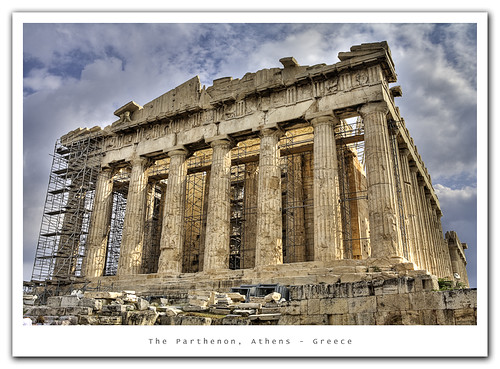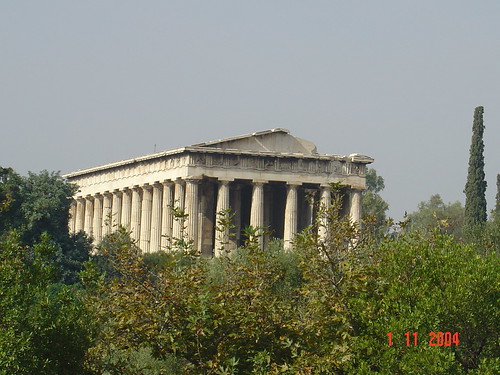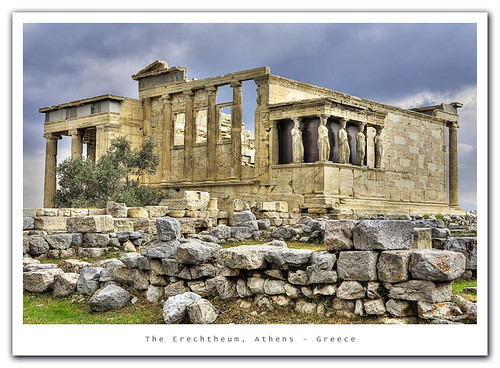and architecture, not only in ancient times, but also until
present day.
Until the 7th century, Greece was without architecture.
Since the pre 7th century Greek buildings were made mostly
of wood or mud-brick, there is nothing remaining of them
and there was little in written record about them.
But in a more modern Greece, buildings such as the
Parthenon and the Coliseum, still partially remain, giving
us beautiful architecture in which to study.
 (Parthenon)
(Parthenon) (Coliseum)
(Coliseum)Most Greco-Roman architecture either rectangle or square in
shape and made from limestone, which is found in abundance
in Greece. Though many people think Marble was used in the
building of the Greco-Roman architecture, the cost and
unavailability of it directed its use for mostly sculptural
decoration, except for the Parthenon.
Greco-Roman architecture is abundant in columns and size.
Most people don’t realize that there are two types of
Greco-Roman architecture, the Doric and Ionic.
While the famous Parthenon and the Temple of Hephaestus in
Athens are Doric, the Erechtheum, which is located right
next to the Parthenon is Ionic. Ionic Greco-Roman
architecture is more decorative.
 (Temple of hephaestus )
(Temple of hephaestus ) (Erechtheum)
(Erechtheum)The most surviving buildings of Roman-Greco Architecture
lean towards the temples. This is mainly due to the
building material used. Limestone though, after years, can
begin to waste away and decompose with natural erosion.
A building like the temples and the Parthenon were revered
as the grandest buildings, therefore marble, which was
difficult to transport from the few islands where it could
be found, was used.
Dan and Deanna "Marketing Unscrambled"
No comments:
Post a Comment